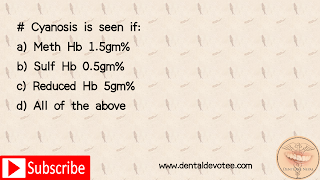SEARCH:
Danger layer of Scalp is:
Remineralization of tooth surface is associated with which component of saliva?
Hypercalcemia occurs in which type of lung cancer?
MCQs on Periodontology - Periodontal Diseases Part 1
A. Gingivitis
B. Periodontitis
C. Gingival hypertrophy
D. Juvenile periodontitis
Condition which may lead to Noma
Drug of choice in pneumocystis carinii pneumonia:
Legionnaire's pneumonia -Pneumonia in association with high fever, confusion and diarrhea suggests
Cotrimoxazole, Clindamycin - Drug of choice for atypical pneumonia caused by pneumocystis carini
Clarithromycin, Flucloxacillin - Drug of choice for community acquired pneumonia
Gram negative bacilli - Most common micro organisms isolated from the patients with nosocomial pneumonias
Mycoplasma, Chlamydia, pneumocystis carinii and viral infections -Causes of atypical pneumonia
Streptococcus pneumonia (or) Pneumococcus pneumonia - Most common cause of community acquired pneumonia is
Doxycycline, Erythromycin - Drugs used for treatment of atypical pneumonia caused by Chlamydia
Erythromycin, Clarithromycin - Drug of choice for atypical pneumonia caused by mycoplasma






